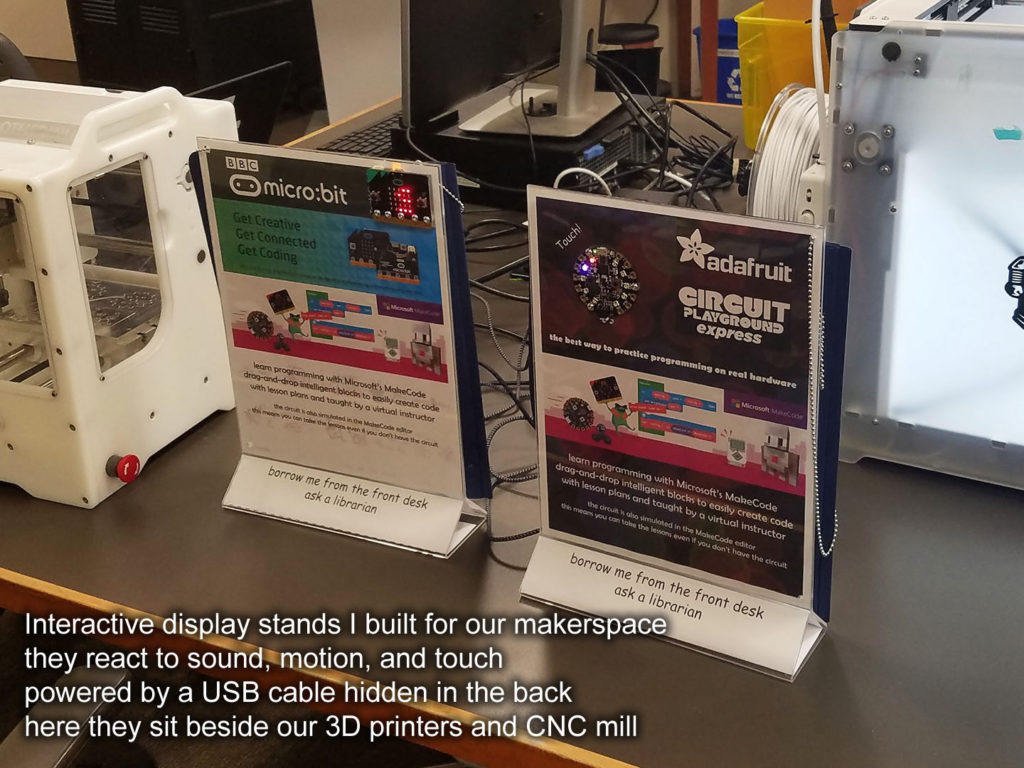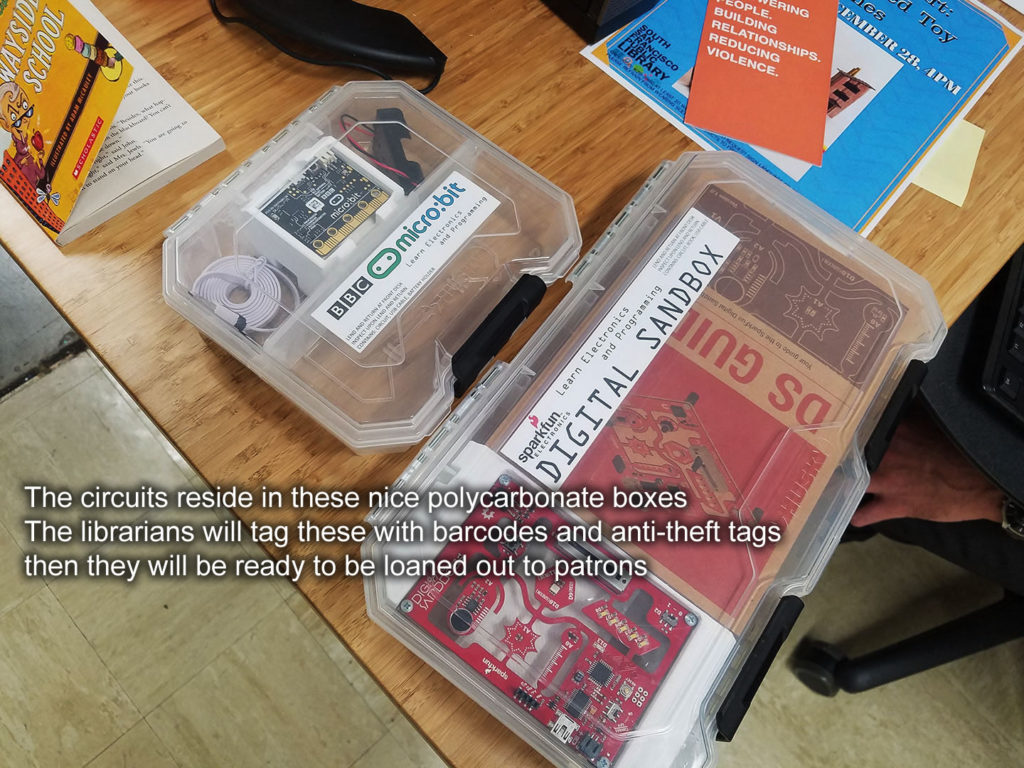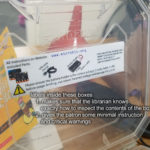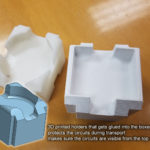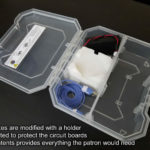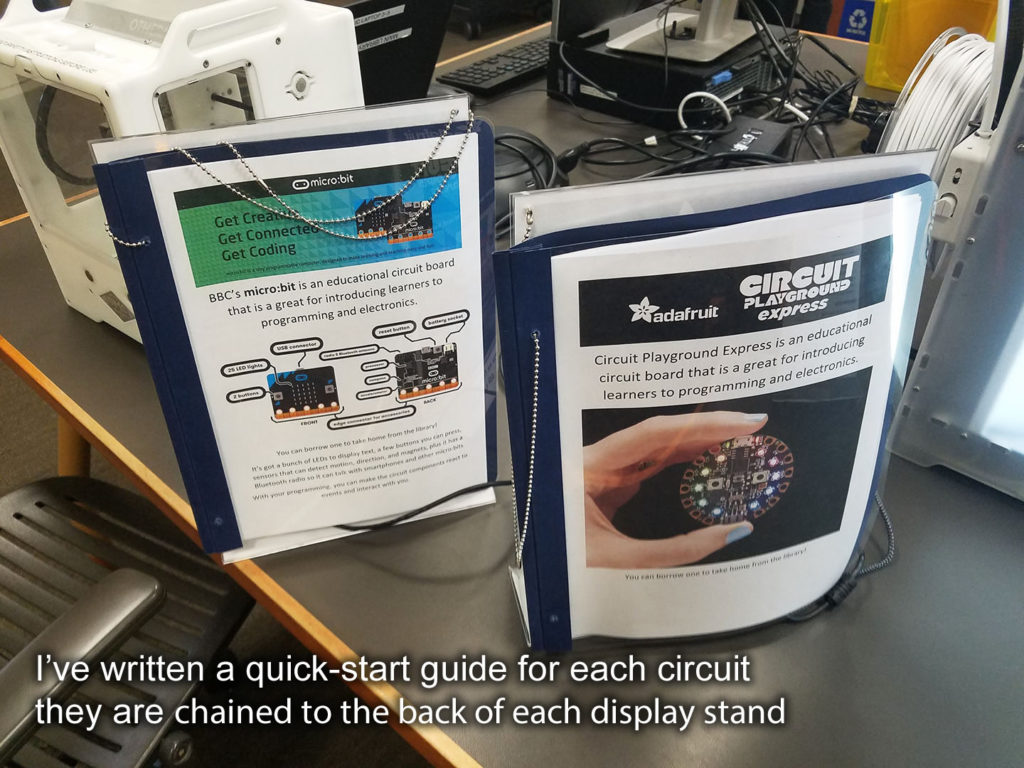A few weeks ago, the library consulted me about teaching programming to kids. The Grand Avenue library is already using the CS First With Google and the West Orange library wants to start something similar and asked because of the previous robotics classes I’ve taught for them. While they could also try Google’s CS First, why not experiment with something else? Something a bit more hands on!
The library have always said they wanted to loan out Arduinos but it just can’t happen because of how much other stuff you must include with it before it becomes useful. It is impractical to expect the librarians to count wires and LEDs when an Arduino is loaned out.
So my targets were: low part count, easy to loan and return, full curriculum written.
What I found:
- Adafruit’s Circuit Playground Express, having worked for Adafruit myself and written for their “learn” website, I knew they were the go-to for what I am looking for
- BBC’s micro:bit, can’t beat the British government backing their STEM education programs. Plus, these are dirt cheap
- SparkFun’s Digital Sandbox, a bit expensive in comparison, but they give you a book with it. I got one for the library to experiment with “offline” learning styles.
As a start, I donated a few of these circuits to the library so that they can be lended out to patrons. To prepare them, I modified some tough polycarbonate boxes from Home Depot (these are awesome, metal hinges and latches, should be very durable). The boxes have a 3D printed holder that protects and displays the circuit proudly. I drew instruction stickers for each box, which also list all the parts to help the librarian inspect the boxes (I don’t want to create a burden for them that they will not be ready for). The box for the Digital Sandbox took some extra work involving a dremel to get the book to fit in perfectly (it should be immediately obvious to patrons how to place things inside the box).
The librarians will attach barcodes and anti-theft tags on them, register the barcodes inside their database, etc, before lending them out.
To promote these items, I made interactive displays that actually holds the circuit in place and powers them with a USB cable. The circuit are programmed with a demo that react to sound, motion, and touch, there’s even a game inside the micro:bit. These fun to make, I drew the posters, put them inside the acrylic sheet holder, the circuits had to have wires soldered and hidden in the back, and then the circuits were secured to the acrylic using torx screws and locking nuts (hopefully this is enough to stop any naughty fingers). On the back of each interactive display, a quick-start guide I wrote is attached via a chain and velcro.
The beautiful thing about the Circuit Playground Express and the BBC micro:bit is that they use Microsoft’s MakeCode. MakeCode’s editor contains a simulator so a large class can be held even with a low number of available circuits. The MakeCode editor also has tutorials that guide you along right inside the editor, and since these circuits are great starting points, I am hoping even the librarians can learn on their own time and eventually be able to teach as well (just like how the CS First curriculum works). I am sorry but I have a full time job and can’t volunteer during their usual after-school time slots.
I was also surprised at how good CircuitPython is for what it’s meant to do. Sure, not as high performance as the bare-metal C and assembly I’m used to, but playing a wave file with just 3 lines of Python really impresses me.
I wanted this to be a Christmas present to the library but I missed that deadline due to a temporary shortage of micro:bits. Micro:bit had to undergo a design change due to EOL of one of their sensors so many stores sold out and didn’t have the new revision in stock.
Happy 2019!
